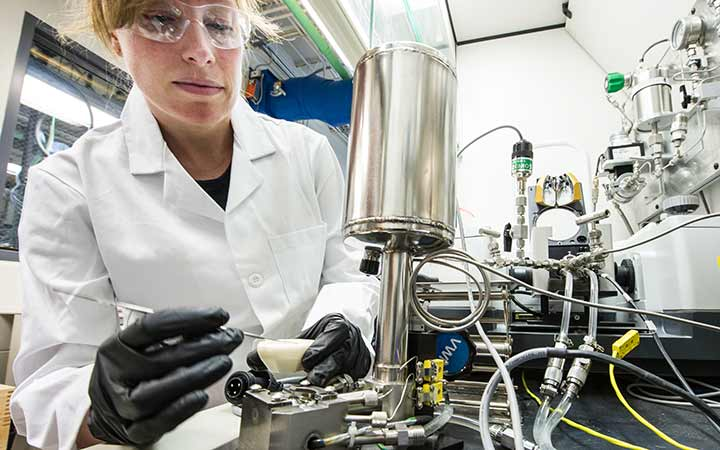In any scientific investigation, accuracy and precision are paramount. The use of significant figures is a fundamental aspect of achieving precision in scientific measurements and calculations. When it comes to the AP Chemistry exam, understanding and correctly applying significant figures can greatly impact your answers on test questions and, therefore, your score on the test. Let’s delve into why significant figures matter and provide you with clear instructions and examples for their proper utilization.
Why Are Significant Figures Important?
Significant figures, also known as sig figs or significant digits, are the digits in a measurement that imply its degree of precision. They help convey the accuracy and reliability of a measured or calculated value based on the inherent limitations of the instruments we use to make the measurements themselves. For example, when I buy a gallon of milk at the grocery store, how do I know that there’s exactly one gallon of milk in the container? From a scientific perspective, here’s what I would infer if I found each of the following listed on my gallon of milk in the dairy aisle:
1 gallon: some amount of liquid between 0 and 2 gallons
1.0 gallon: some amount of liquid between 0.9 and 1.1 gallons
1.00 gallon: some amount of liquid between 0.99 and 1.01 gallons
…
1.0000000 gallon: some amount of liquid between 0.9999999 and 1.0000001 gallons
Obviously, I’m not concerned about the quantity of milk I buy being accurate to several decimal places’ worth of precision: it would be unnecessarily expensive and tedious to dispense quantities of milk too small for my human eye to be able to realistically detect in a bowl of cereal. However, when I make measurements in a laboratory setting (such as minute quantities of chemicals in an acid/base titration or large volumes of gas formed from a chemical reaction), the accuracy and precision of those measurements influences the confidence I have in the conclusions I draw about the phenomena that occur in the natural world around me. Here are a few more reasons significant figures are important:
1. Consistency and Communication:
Utilizing significant figures ensures that values are expressed in a consistent and standardized manner. This facilitates clear communication of experimental results, making it easier for others to interpret and replicate your work.
2. Error Analysis:
When performing calculations, understanding significant figures helps in error propagation analysis. It allows for a more accurate assessment of uncertainties and errors in both measurements and calculations.
3. Compliance with AP Chemistry Guidelines:
The AP Chemistry exam assesses your ability to follow precise guidelines and conventions in scientific practice. Demonstrating proficiency in using significant figures is a direct reflection of your understanding of and compliance with these guidelines.

Instructions for Correct Use of Significant Figures:
1. Identifying Significant Figures in a Measurement:
- All non-zero digits are significant. For example, in the measurement 4.27 g, there are three significant figures: 4, 2, and 7.
- Zeros between non-zero digits are significant. For instance, in 505 mL, there are three significant figures.
- Leading zeros (zeros to the left of the first non-zero digit) are not significant. For example, in 0.052 kg, the significant figures are 5 and 2.
- Trailing zeros in a decimal number are significant. In 3.400 m, there are four significant figures.
- Trailing zeros in an integer are significant if they are followed by a decimal. For instance, in 1000. mL, there are four significant figures.
2. Determining Significant Figures in Calculations:
For addition or subtraction, the result should have the same number of decimal places as the measurement with the fewest decimal places:
65.9 mL + 105.48 mL = 171.38 mL round to 171.4 mL
In this example, the sum of a measurement precise to the tenths digit and a measurement precise to the hundredths digit should be rounded to the nearest tenth after completing the calculation in full.
For multiplication or division, the result should have the same number of significant figures as the measurement with the fewest significant figures.
93 g / 7.553 cm3 = 12.312988… g/cm3… round to 12 g/cm3
In this scenario, the quotient of a measurement with two significant figures and a measurement with four significant figures must be rounded to two significant figures. Notice that the calculated density of the object in this example is less precise than we might expect due to the lack of precision in the mass measurement. If I wanted to more precisely determine the density of this object, I’d start by measuring its mass using a balance capable of greater precision (in essence, one that measures to a greater number of decimal places).
3. Notable exceptions:
We may assume that some of the numbers we use in calculations are exact by definition, meaning that we may assign them as many significant figures as are necessary to match the number of significant figures or decimal places in a measured value. For example, I’ll convert the speed of light from meters per second to miles per hour:
(299,792,458 meters/1 second) * (3,600 seconds/1 hour) * (1 mile/1,609.34 meters) = 670,618,296.2 miles/hour… round to 670,618,000 miles/hour
Notice that I round my calculated value to six significant figures instead of one or two because I may justifiably assume that there are exactly 3600 seconds in exactly one hour.
Mastering significant figures is challenging but indispensable for excelling in AP Chemistry. They are not just about number manipulation: they embody the precision and rigor necessary for scientific excellence. By understanding these rules and applying them correctly, you can enhance your performance on the AP Chemistry exam and, more importantly, develop essential skills for a successful scientific journey. As such, I encourage you to embrace the significance of significant figures and let them guide you to accurate and precise scientific calculations.
If you’d like more help with significant figures in calculations or anything else related to AP Chemistry, please reach out to us at 720-204-1041 or admin@mindfish.com.
Interested in learning more about Test Prep at Mindfish?
Contact us today to find out what our dedicated tutors can help you achieve.





